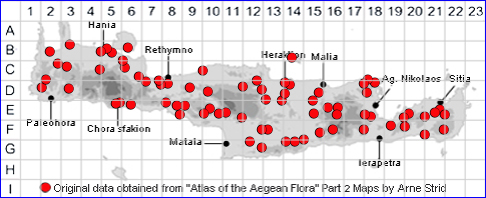
SPECIES DESCRIPTION
ECHIUM ITALICUM
Family:- BORAGINACEAE
Common name:- Pale bugloss
Synonyms:- Echium italicum subsp. biebersteinii, Echium pyrenaicum var.
italicum, Isoplesion italicum.
Meaning:- Echium (Gr) Viper, a name used by the Greek physician Dioscorides'
for a plant that was used to cure snakebite.
Italicum (L) From Italy, Italian.
General description:- Robust, erect, medium to tall biennial, with dense white or
yellowish bristles (hispid); forming large leafy rosettes in the first year.
Stem:-
a) to 1m.
Leaves:-
1) Basal:
a) 20-35 x 1.5-4.0 cm.
b) lance-shaped.
c) with flat-lying (appressed), soft bristles (setae).
2) Cauline:
a) more or less narrowly elliptical.
Flowers:-
1) Inflorescence:
a) 10-12mm long.
b) numerous in a symmetrically branched pyramid.
c) yellowish, pinkish or bluish-white.
2) Calyx:
a) 6-7 mm.
3) Corolla:
a) 10-12 mm.
b) very narrowly funnel-shaped (infundibuliform).
c) with 4-5 long-exserted stamens.
d) filaments pale.
Fruit:-
1) Nutlets:
a) ovoid-obtusely 3-angled (trigonous).
b) erect.
c) wrinkled (rugose), with a flat base.
Key features:-
1) Corolla 10-12 mm. usually yellowish- or bluish-white.
2) Basal leaves usually ± lanceolate, attenuate at the base, usually without sharp
stiff lairs lying ± parallel to and close to the surface (strigose).
3) Inflorescence ± spike-like.
4) Plant usually with a single or a dominant flowering stem 40-100 cm., with stout,
rough (asperous) to stinging setae.
5) Filaments pale.
Habitat:- Rocky and sandy coastal habitats, roadsides, waste ground, hillslopes.
0-1200 m.
Distribution:- Widespread in the Mediterranean area and SW Asia, Greece and
Crete eastwards, including Cyprus. Widespread and common on Crete.
.
Flowering time:- Mar-July.
Photos by:- Steve Lenton
